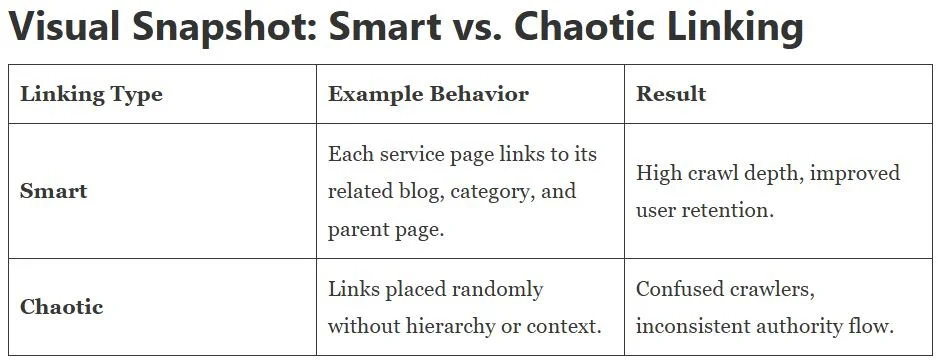How to Build a Scalable Internal Linking Architecture That Scales with Your Site
As websites grow, so does complexity. Using a scalable internal linking plan is essential in surfacing the data visitors are looking for. An organized structure allows search engines and visitors to find relevant information fast, strengthening authority and engagement.
The Foundation: Why Internal Links Matter
Internal links distribute authority across your domain and help search engines understand how pages relate to one another. They enhance user navigation by guiding readers to deeper, relevant content, strengthen page authority by channeling equity from high-value pages, and improve crawl efficiency so that new content is discovered and indexed more quickly, supporting stronger overall SEO performance. When implemented correctly, internal linking is one of the highest-ROI elements of your SEO strategy.
Design Principles for a Scalable Structure
Instead of adding links ad hoc, build the site with focused intent. It is an evolving ecosystem where each new page plugs naturally into existing pathways. The general pattern looks something like this:
Create pillar pages for broad topics (e.g., “Digital Marketing Services”).
Link out to supporting pages that cover subtopics in depth.
Connect back to the pillar to reinforce hierarchy.
Use breadcrumbs to help both users and crawlers navigate.
Review orphaned pages quarterly to ensure no content is left unlinked.
Quick Implementation Workflow
Audit your existing links using tools like Screaming Frog or Ahrefs, then identify high-authority pages and map where they can share link equity. Add internal links naturally within paragraphs, keeping total links under Google’s recommended 100 per page. Finally, track performance using Search Console’s internal link report to ensure link equity continues to flow and strengthen your site as it grows.
Common Scaling Challenges
As your website hits hundreds or thousands of URLs, three issues emerge:
Uneven authority flow: Some pages hoard links while others are forgotten.
Duplicate anchors: Reusing identical text weakens contextual signals.
Legacy content: Old posts remain unconnected to new topical clusters.
The fix is periodic maintenance because internal linking isn’t “set it and forget it.” As the website changes, the link patterns within the site must adapt as well
Advanced Tactics for Growing Sites
Dynamic linking modules in CMS templates automatically connect new blogs to relevant core pages, while contextual widgets such as “related topics” and “read next” balance traffic between evergreen and fresh content. AI-driven tools like Link Whisper quickly identify cross-topic gaps, reducing manual effort and maintaining a clean, crawlable internal structure that strengthens both user experience and SEO performance.
Final Take
A scalable internal linking architecture keeps your website efficient, intuitive, and search-friendly as it grows. By applying hierarchy, automation, and consistency, you strengthen both discoverability and domain authority—cornerstones of effective SEO services.

